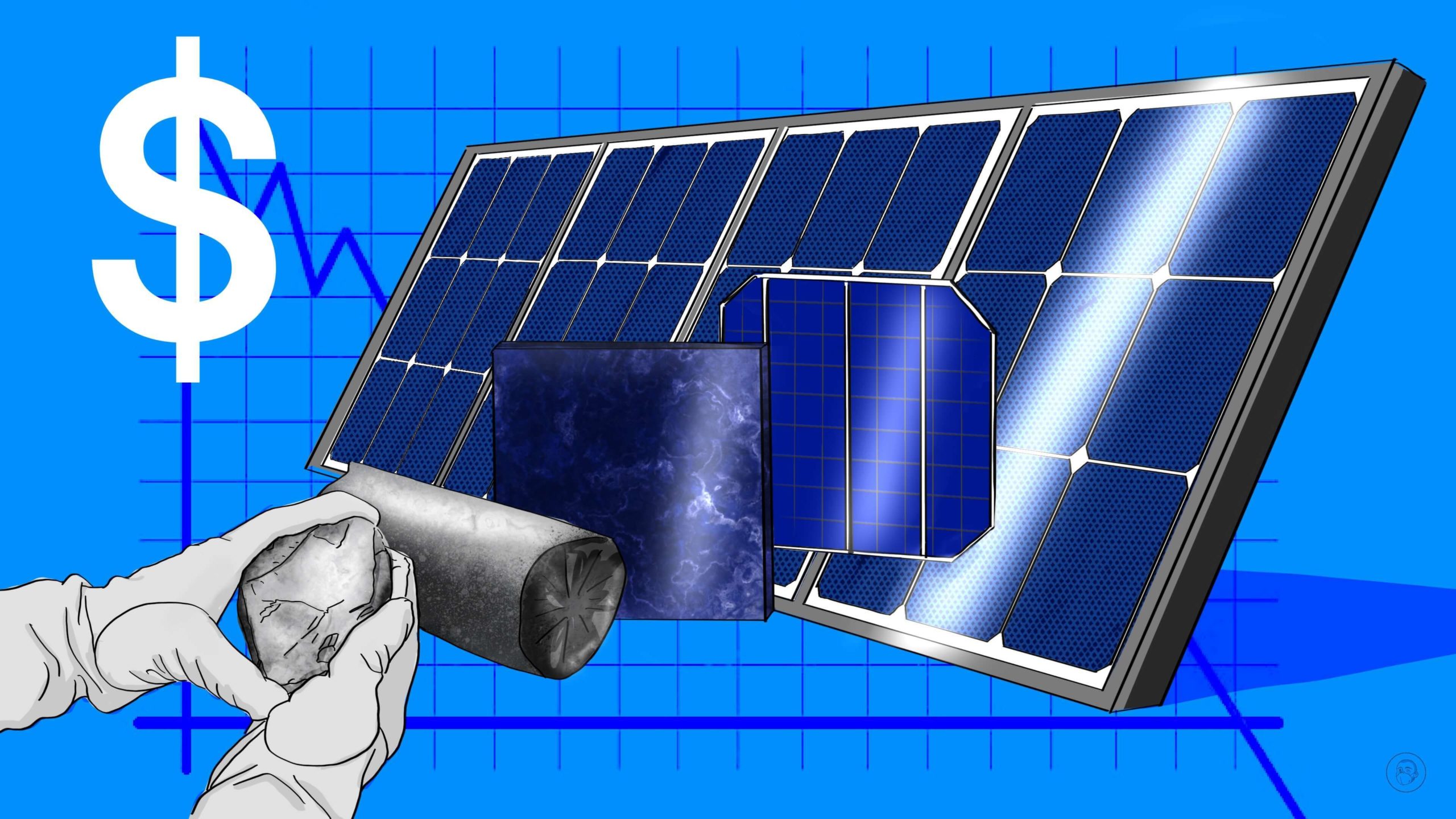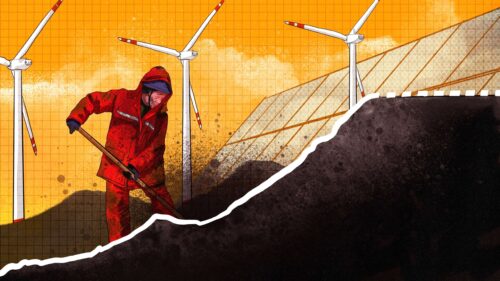With the price of silicon dropping, China’s solar energy industry is set for another record-breaking year
After years of continuous increases, silicon prices in China have started to fall due to overcapacity, and this is likely to contribute to an expansion of China’s photovoltaic industry in 2023.

In December 2022, the price of silicon, the key raw material of solar panels, started to drop.
From a high point of 306,000 yuan ($45,091) per ton in October, the price of monocrystalline dense materials — which are made from a single source of silicon — fell last week to 176,200 yuan ($25,964) per ton, a drop of 42.4%. In January, the price of polysilicon — a lower-quality blend of silicon from different sources — fell below 150,000 yuan ($22,103) per ton, a drop of more than 50% from the previous month.
The dramatic price drops were expected: In October 2022, we predicted that the price of silicon was about to drop, due to a crackdown on price gouging by the Ministry of Industry and Information Technology (MIIT) and to the increase in production capacity in China. According to the China Photovoltaic Industry Association, in 2022, China’s polysilicon production was around 811,000 tons, a year-on-year increase of 65.5%.
Does cheap silicon mean more solar panels?
According to several industry insiders quoted in the Chinese media, the price of silicon will likely keep decreasing in 2023, and eventually settle somewhere in the range of 80,000 yuan ($11,788) to 120,000 yuan ($17,682) per ton.
With the price of silicon finally trending downward, what is the outlook for China’s photovoltaic (PV) industry in 2023?
For one thing, silicon materials will not be a bottleneck restricting demand, and the first impact of the lower upstream costs is an increase in production of the downstream solar panels and components. Lower production costs will likely give a boost to both local and foreign demand in China’s PV industry in 2023.
The lower prices of upstream raw materials are already impacting the industry. Last week, an executive of a Chinese PV company told a journalist that “companies in the upper and middle reaches of the industrial chain have begun to significantly reduce” their prices by as much as 30%. Rumors reported in the Chinese media suggest that many solar panel producers have already begun to increase production, expecting a rapid increase in demand from February because of reduced costs.
This means that China’s PV industry could break new records in 2023:
- Newly installed PV capacity could exceed 100 GW (up from the approximately 80 GW record high of 2022).
- PV revenues from companies listed on Chinese stock markets might top a trillion yuan (more than $147.5 billion) (in the first three quarters of 2022 alone, these revenues amounted to 961.706 billion yuan, or $141.71 billion).
In addition, with the drop in silicon prices, profits in the PV industry will likely be more evenly distributed among the upstream and downstream parts of the industry. Thus the eye-catching profits that Tongwei Group 通威集团, the world’s leading supplier of silicon for solar panels, achieved in 2022 will likely be more modest in 2023. Indeed, on December 27, Tongwei announced the latest prices for its monocrystalline solar cells: They were down by about 20% from just a week earlier. But the companies that make the solar panels will see healthier profit margins.
Will foreign buyers enjoy cheaper prices for solar panels?
In the first half of 2022, China’s exports of solar panels amounted to 78.7 GW, an increase of 102% year-on-year. China’s leading PV companies derive from 50% to 80% of their revenue from outside China. Will the drop in the price of silicon translate into lower prices for foreign customers of Chinese solar panels?
Over the last month, the price of solar panels dropped by 0.4 yuan ($0.05) per watt to 1.6 yuan ($0.23) per watt. Industry insiders expect the price to drop to as low as 1.2 yuan ($0.17) per watt in 2023. But demand from Europe for Chinese solar panels will almost certainly remain strong in 2023, and as a result, the price of solar panels will stabilize around 1.5 yuan ($0.22) per watt after the first quarter of 2023.






